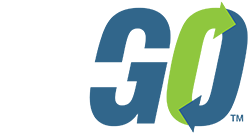Managing todays multi-generational workforce is the featured WP.

Introduction
We are currently at an interesting point in history, one where five generations of employees are working side by side. With people living and working longer, companies are being challenged to manage the different needs and expectations of this complex and diverse employee mix. A workforce made up of everyone from recent college
graduates to experienced employees working past the typical retirement age presents a unique challenge for managers who understand how work styles and perspectives can vary by generation. Savvy organizations will look for human capital management solutions that allow them to manage the strengths, weaknesses, needs, and personalities of all employees, no matter which generation they are a part of, to elicit the best performance and results.
How the generations differ
While it’s important to remember that each employee is unique — with his or her own goals, motivations, and attitudes — generational labels can be useful tools for characterizing workers and creating strategies to manage a multigenerational workforce. The evolution of the Baby Boomers’ “live to work” philosophy gave way to Generation X
and their “work to live” outlook, which is now being replaced by the Millennials’ “work my way” viewpoint and Generation Z’s desire to “make a difference.” These different attitudes make it critically important that organizations develop and support a dynamic workforce management style that allows managers to easily adapt to the needs of their employees while also meeting the needs of the business.
Human capital management solutions can help you meet the challenges of managing multiple generations by providing analytical insights into the evolving workforce — from optimizing communication by leveraging mobile technology to offering flexible working hours for work-life balance and managing employee absences for compliance, cost control, and employee well-being. By gaining analytical insights into the evolving workforce, human capital management solutions can help you meet the challenges of managing multiple generations.
It starts with communication
One of the keys to successful management is recognizing that people consume information differently. Knowing how to communicate effectively with employees is a valuable management tool and becomes even more critical with a multigenerational workforce. As technology in the workplace has changed, so have communication styles and expectations. Everything from the methods and timelines to the devices we use in the workplace is perceived differently by each generation.
For Millennials, technology is king, with 65 percent saying that losing their phone or computer would make daily life tougher than losing their car. With this group, text and instant messages are more popular than email. Their younger brothers and sisters of Generation Z like to communicate with images and can multitask across multiple
screens. By contrast, Generation X and Baby Boomers are generally more used to email and phone communications, with texting gaining in popularity in recent years.
Having a variety of different options for communication in the workplace is important, allowing managers to communicate with each generation in the way that best meets their needs. Email, text messages, on-screen alerts, voice mail, and even face-to-face communication should all play a role in keeping employees updated on important
company information, as well as receiving notifications around work schedules, time-off requests, pay history, and hours worked.
The work/life balancing act
While previous generations of workers tended to value company loyalty and place a strong focus on developing their careers, Millennials are increasingly seeking meaningful work that they can balance with their personal lives. But no matter the generation, each has work/life challenges that employers should be aware of.
When compared to the Silent Generation and Baby Boomers, a far greater percentage of Gen Xers, Millennials, and Gen Zers are part of dual-income families, putting even more pressure on the work/life balance equation. The Ernst & Young Global Generations Research survey found that Millennials cite lack of flexibility as one of the top reasons
they’ve left jobs. And 38 percent of U.S. workers, fed up with the lack of paid parental leave, indicated that they would be willing to move to a country that offered better maternity and paternity benefits.
These changing demographic patterns have changed how each generation views its responsibilities to the workplace. For managers, understanding these attitudes is important to balancing employee needs with business requirements. Human capital management technology that includes self-scheduling, self-service, and the ability to swap shifts allows managers to balance employees’ preferences with the requirements of the business — and do it in a fair and balanced way that increases employee satisfaction.
Scheduling technology provides consistency across the workforce, reducing favoritism and resentment. Managers benefit from the ability to forecast scheduling to meet demand, which helps improve customer satisfaction. Flexible scheduling options also make it easier for managers to let employees work from home and be part of virtual
teams, making the task of balancing life and work a little easier.
Managing absences across generations
Managers know that employee absences, whether planned or unplanned, will always be a reality in the workplace. In the United States, the total direct cost of employee absence is 15.4 percent, as a percentage of payroll, including wages and salaries, overtime, and replacement workers.7 Though the underlying causes of absence vary by generation,
what’s important is for organizations to control the impact of absence on costs and productivity. Whether employees are caring for aging parents, raising families, juggling school vacations and snow days, or dealing with medical issues, having an automated solution in place to manage employee absences will help managers minimize the impact on productivity.
To control the impact of absenteeism, managers need to be able to see what’s happening so they can take action. Managing the day-to-day impacts of absenteeism means finding replacement workers, redistributing workloads, and tracking time off accurately for compliance and accruals.
Then, by identifying trends, absences, and overtime spikes, managers can take preventive measures so absence doesn’t become a bigger issue. With an aging workforce taking more FMLA leave, an automated absence solution can also help companies minimize compliance risk.
The evolving workforce
People are more connected today than ever before. Employees are working different hours in different locations, delivering flexibility to workers, but making it difficult for managers to determine what their employees are working on and when they’re working. As the definition of the “office” changes, employees are as likely to be productive on an airplane, in a hotel, at home, or in a coffee shop as they are at their desk. Of the Millennials surveyed for Deloitte’s Millennial Survey 2016, 75 percent stated they would like to start working or work more frequently from home or other place outside their work environment where they would feel more productive.
In this complex work environment, managers need real-time visibility into their workforce. An analytics dashboard provides actionable insights into the workforce so managers can measure what employees are doing and when. By understanding what’s happening and why, managers can take corrective action, identify patterns, and ensure the consistency and fairness of policy enforcement. Employees maintain the flexibility of working at different locations and different jobs, and managers can easily track productivity.
This also gives managers the freedom to perform administrative tasks at their leisure or on the go. By freeing managers from their desks, they can focus more attention on managing employees and operations. Human capital management solutions are adapting to the changes in how people work, enabling greater flexibility, satisfaction,
and system adoption.
Conclusion
With five generations working side by side, now is the time for organizations to build strong managers who can effectively manage employees, regardless of where they are in their careers. By understanding what’s personally important to employees, managers can better nurture their most valuable business advantage. Recognizing the demands
placed on older workers and making accommodations to keep them in the workforce will retain their leadership skills and vast institutional knowledge. At the same time, it’s important to acknowledge that Millennials and Generation Z have grown up in a world transformed by technology and naturally approach work and their careers differently.
Smart organizations will manage to the needs of their multigenerational workforce — but this can only be successfully achieved with an effective HCM strategy. Leveraging mobile technology to optimize communication, offering flexible working hours with automated scheduling, controlling the cost of absence, and gaining true visibility into the workforce will help managers meet the challenges of managing multiple generations.
